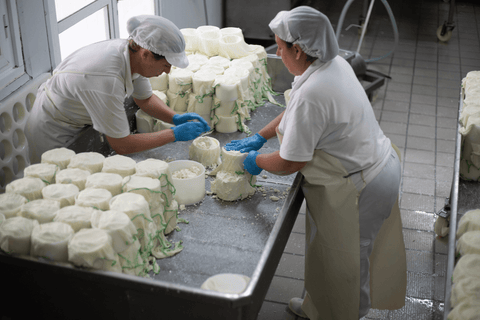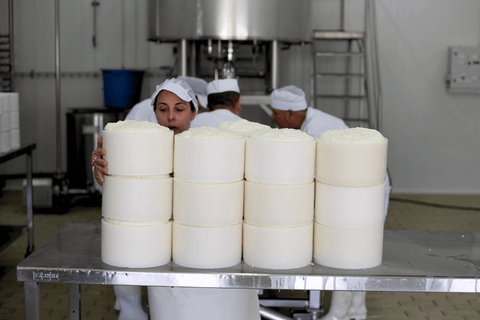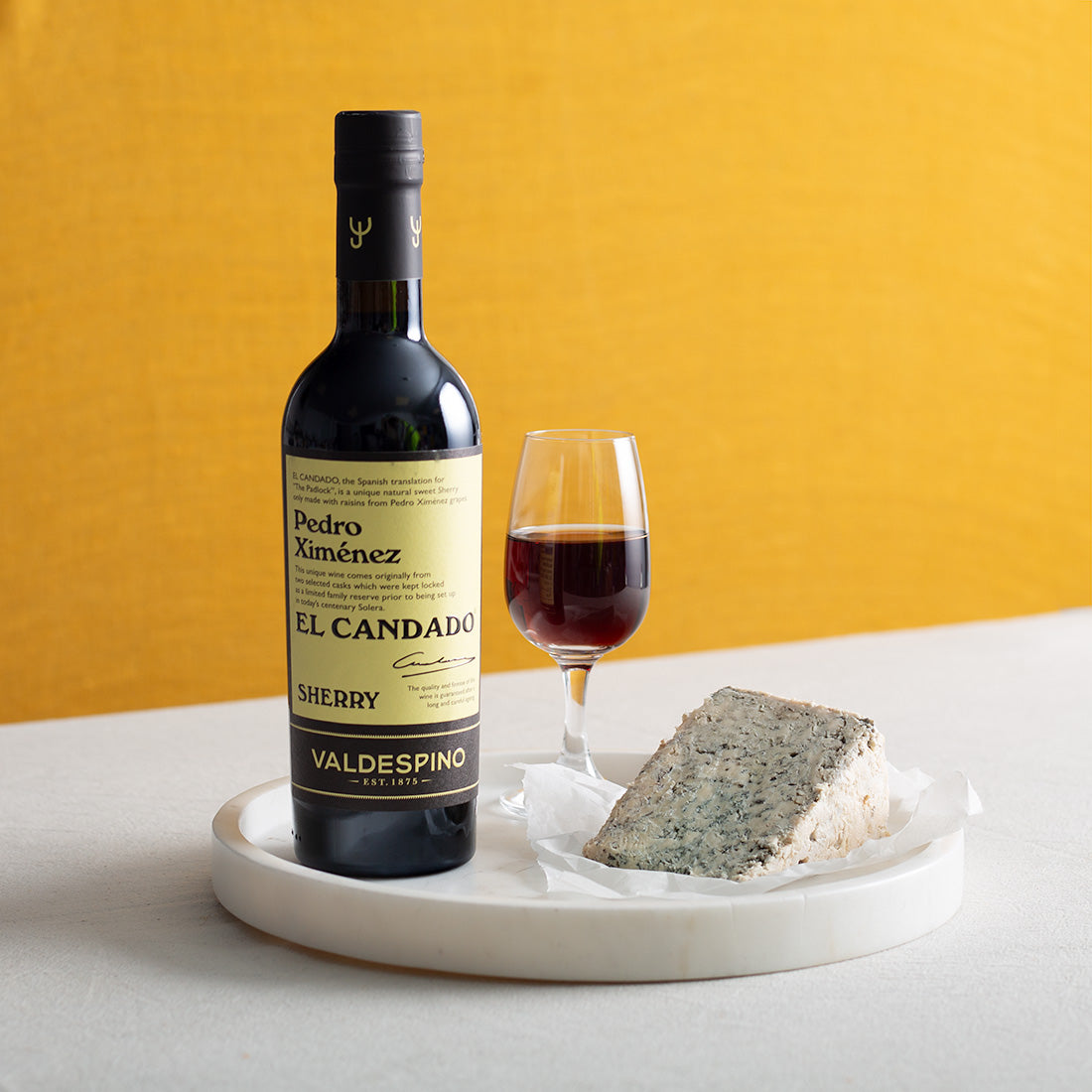LAS QUESERAS - SPANISH WOMEN IN CHEESE
This International Women's Day, we're celebrating 'las queseras' of Spain - the women behind the Spanish cheeses we know and love at Brindisa!
From the green hills of Galicia to the semi-arid climes of Murcia, women have been producing cheeses across Spain for generations. In many areas of the country, cheesemaking began quietly, within the kitchens of Spanish homes, where women made cheese by hand. Though the broader industry has seen a shift toward larger-scale operations that are often more male-dominated, women remain active contributors to the industry's growth and diversification today.
Our founder, Monika, has played a crucial role in creating a thriving market for Spanish cheeses in the UK, building long-standing relationships with fantastic suppliers. This month, for International Women’s Day, we're putting a spotlight on some of the female members of the Spanish cheese industry who bring you the cheeses that you know and love at Brindisa. So, let’s set off on a route, from northwest to southeast, through some of Spain's female-led dairies!
GALMESÁN

First on our list is the Galmesán dairy, nestled amidst the forests and meadows of Galicia, in the town of Arzúa. Here, cheese-making has been woven into the fabric of daily life by women in the family homes of the region. "Arzúa is a land where you grow up watching mothers and grandmothers making cheese in the kitchen, so cheese making has been linked to women since its origin” says Carmela Cano, Manager at the dairy. The team at Galmesán has always relied on the extensive knowledge that these women have built and passed down to family members over the years. Production today at the dairy is down to a harmonious blend of this ancestral wisdom and cutting-edge technology, which has been embraced with open arms.
Produced in the style of traditional Alpine cheeses, Galmesán uses fresh milk from cows that graze freely in the meadows surrounding the dairy. The result? A hard cheese with a big flavour and crunch. Think ‘parmesan meets buttered popcorn’!
Today, women make up over 70% of the dairy’s small team. From the youngest member, Marta, 29, to ‘cheese master’ María Jesús, almost 60, many years of cheesemaking knowledge are shared between the women. And the dairy is a well-oiled machine, with Carmela describing the linking between each individual process as ‘perfectly interlocked’.
This seamless cooperation is also seen in the way the women have defended their use of pasture-raised milk and the production of ferments over the years. “The stubbornness that characterises us women has brought us this far”, explains Carmela. Galmesán’s Super Gold award at the 2023 World Cheese Awards certainly backs this up.
MONTE ENEBRO

Heading southeast, to Ávila province, we find the Queserías del Tiétar dairy, tucked away in the Tiétar Valley. An exceptional area for livestock, this stunning paradise in the Sierra de Gredos mountain range is home to a cheese first brought out of the area by Brindisa founder Monika in the 90's: Monte Enebro. Created in the 1980's by legendary cheesemaker Rafael Baez, along with his daughter Paloma, Monte Enebro has since won numerous gold awards, at national and international level.
Since the loss of their parents, 3 of the 8 Baez siblings now work in the dairy, all gravitating around this groundbreaking cheese. Paloma heads up a small but powerful team which, like Galmesán, comprises a 70% female workforce. Of course, the dairy’s male team members are an integral part of the operations, with tasks being carried out depending on individual strengths. The dairy recognises the unique skills that each woman brings to the cheese-making process, such as a meticulous eye for detail. The dairy’s slogan ‘El queso hecho arte’ or ‘Cheese made (into) art’ perfectly underlines this care and attention that Paloma values.
At the helm of the operations is Paloma's sister, María Jesús, a pivotal figure who works alongside their master-cheesemaker brother, Nacho, overseeing the manufacturing and quality control at the dairy. She also organises the daily work for the rest of the staff, all of whom have worked at the dairy for over 10 years.
For a team that has such a wealth of knowledge, it’s no wonder that Monte Enebro is so widely enjoyed. Even those who proclaim they don't like goat’s cheese can’t help but love the contrast of the clean, citrus paste and the tangy, complex rind - a truly world class cheese.
TORTA DE BARROS

Continuing south, towards the Portuguese border and near the 1st Century Roman city of Mérida, we find “one of the most luxurious things you could ever eat”, according to Brindisa founder Monika. With the region’s sheep enduring scorching summers and freezing winters, the terroir produces something totally unique.
In this vast yet relatively remote region of Extremadura sits another of Brindisa’s cheese producers: Quesería Tierra de Barros, home of the Torta de Barros. Served with the top cut off, scooped and shared like a French Vacherin, this is a rich, earthy cheese made with native cardoon thistle rennet.
Behind the cheese-making process is another female-dominated team. Cristina Mangas oversees management while Maribel, her sister, is another key player. Cristina tells us that Maribel “knows how to do everything”, to the extent that she can both ripen and ship a cheese!
In the production rooms, sisters Agustina and María José oversee turning and the refining process, treating the cheeses with the utmost care, before Fátima adds the final touch with an intricate lace wrapping. As the ripening process concludes, Coro and Inmaculada take charge of shrink-wrapping and labelling each "precious jewel”, as Cristina calls the cheeses. The women of Quesería Tierra de Barros are more than skilled artisans; they are the hands that carefully shape and enhance every phase of the cheese-making journey. “They are special" finishes Cristina.
MANCHEGO 1605

Turning east, we make our way to Castilla-La Mancha, and the city of Ciudad Real. Here, in 2007, the Sierra la solana farm opened the 1605 Dairy, named to honour the year of the first edition of Don Quixote de La Mancha. The dairy's aim? To maintain the tradition of Spain’s most famous cheese: Manchego.
With a female Master Cheesemaker, María José, at the wheel, the dairy has maintained its commitment to gender equality since it opened. Within this small yet dynamic team, where responsibilities are shared equally between men and women, Marta Tajuelo stands out as an expert in raw milk Manchego. This is a woman so dedicated to her craft that each piece of 1605 cheese will pass through her hands over 20 times before it’s ready for sale.
The cheese-making prowess of 1605 extends beyond tradition, we’re told, with innovative projects being led by women too. María recently spearheaded the development of the dairy’s truffled cheese, Sierra la Solana, which earned 2 silver medals at the World Cheese Awards, and a gold medal at the Mondial du Fromage, among others. This stands as a testament to the dedication of women in shaping the future of Spanish cheese-making.
RUPERTO

Our final stop takes us to a dairy on the southeastern side of Spain, just a few miles from the Mediterranean coast. Like the northwestern region of Galicia, cheese making in the region of Murcia has long been linked to women in the home. With this tradition in mind, Quesos Ruperto stands out. “The cheese is made entirely by women – it's been like that from the very beginning”, explains Guillermina Sanchez, the dairy’s Commercial Manager.
Ruperto is a raw sheep’s milk cheese, deep ochre in colour. With its washed rind, it has a very intense aroma and a buttery, velvety texture. In addition, like 1605, the women of Quesos Rupertos pride themselves on their constant innovation and introduction of new products. During the Covid lockdown, they developed a new raw sheep’s milk cheese containing mullet roe, a nod to the local delicacy from the nearby Mar Menor lagoon. The dairy's pursuit of pushing the cheese-making envelope earned them a spot in the final of a contest held by the Spanish Cheese Institute to celebrate innovation in the industry.
“Cheese making is a very complex process”, explains Guillerma, “it’s a profession of sacrifice, it’s very rewarding, but it’s also hard”. These words encapsulate the dedication of the women in all the dairies on our route. While their work is relentless and full of challenges, their years of enduring service prove that the triumphs are worth it.
Interested in finding out more? Watch our 'Brindisa Celebrates' YouTube series, in which we visit four of the dairies mentioned above.
 New in: Señorio Acorn-Fed Ibérico Ham Kit
New in: Señorio Acorn-Fed Ibérico Ham Kit 100% Iberico Hand-Carved Ham
100% Iberico Hand-Carved Ham Cooking Chorizo
Cooking Chorizo Freshly Sliced Charcuterie
Freshly Sliced Charcuterie FESTIVE PICK: GRANIZO WITH TRUFFLE
FESTIVE PICK: GRANIZO WITH TRUFFLE ARTISAN CHEESE BOX
ARTISAN CHEESE BOX Tinned Fish
Tinned Fish OLIVES, NUTS AND SNACKS
OLIVES, NUTS AND SNACKS OLIVE OIL & VINEGAR
OLIVE OIL & VINEGAR SAUCES & GAZPACHO
SAUCES & GAZPACHO GIFT BOXES AND HAMPERS
GIFT BOXES AND HAMPERS New in: iconic Perelló decorations
New in: iconic Perelló decorations Sparkling Wine
Sparkling Wine Sherry
Sherry BEST SELLERS
BEST SELLERS New in: Perelló Olive Oil
New in: Perelló Olive Oil






